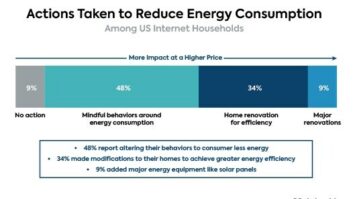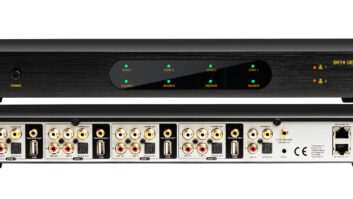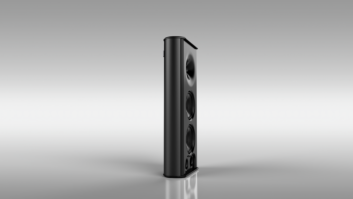A new study from the Consumer Electronics Association (CEA) found that consumer electronics now account for a lower percentage of electricity usage per household than they did three years ago, despite their significantly higher market penetration in U.S. homes.
The study, Energy Consumption of Consumer Electronics in U.S. Homes
, says CE devices accounted for just 12% of residential electricity consumption in the U.S. last year, a nine percent drop from their energy consumption share in 2010 (13.2%).
“This comprehensive assessment of CE energy consumption is a significant contribution to the understanding of energy efficiency trends within our industry,” said Gary Shapiro, president and CEO of CEA. “Rapid changes in the energy consumption characteristics of high-tech devices make it essential to develop up-to-date and accurate assessments of energy usage. And it’s clear the energy efficiency improvements for consumer electronics are best driven by innovation, competition, voluntary agreements and programs such as ENERGY STAR.”
Within CE’s 12% share of total residential energy consumption in 2013, televisions accounted for 30%, set-top boxes 18% and computers 13%. While televisions continue to be the most widely owned CE device in the U.S. with 97% household penetration in 2013, their unit energy consumption is declining due to innovations in display technologies. The total annual electricity consumption of televisions dropped 23% from 2010, as efficiency levels increased and the use of cathode ray tube (analog) televisions declined.
“The Environmental Protection Agency applauds the electronics industry for the efficiency innovation that underlies the findings of this new study,” said Ann Bailey, director of the ENERGY STAR Products Program. “This is further evidence that American consumers don’t have to sacrifice to save energy and help protect the climate.”
“Long-standing programs like ENERGY STAR and new-model approaches such as the recent set top box voluntary agreement prove that energy efficiency is best achieved when the public and private sectors work together,” said Doug Johnson, vice president of technology policy at CEA. “In the rapidly-changing world of electronics devices and high-tech products, these voluntary and market-driven approaches are the only methods that can keep pace with technology, protect innovation and competition, and still achieve efficiency goals. If older data is used to analyze potential energy policy decisions, such as voluntary or mandatory regulatory programs, it can lead to less effective policy decisions that may not achieve the end goals.”
This is the third major study CEA has commissioned to quantify the electricity consumption of CE in U.S. households. The two prior studies focused on CE in homes in 2006 and 2010.
The latest study covers 17 priority products comprising 80% of the residential energy use of consumer electronics, plus an additional 29 other products that make up the remaining 20%. Relative to other energy end uses, the CE end-use characteristics typically change very quickly due to innovation and shorter product cycles. According to the study, U.S. households were actively using nearly 3.8 billion CE devices in 2013 spanning 46 discrete technology categories and consuming an estimated 169 terawatt-hours (TWh) of electricity. The prior study reported 2.9 billion devices were in use in 2010 across 35 discrete technology categories and consumed an estimated 193 TWh.
“As the Alliance pursues the goal of doubling energy productivity in the U.S. by 2030, it’s essential that we understand and account for energy-use trends and efficiency gains across all industry sectors, including electronics,” said Kateri Callahan, president of the Alliance to Save Energy. “We applaud CEA for its commitment to accuracy in conducting and sharing these studies, which provide invaluable insight to both policymakers and the broader energy efficiency community.”
“Good energy-efficiency policy depends on having good and current data,” said Assembly Member Steven Bradford (D-Gardena), chairman of the California Assembly Utilities and Commerce Committee. “Especially for the fast-moving, innovative consumer electronics industry, it’s crucial for policy makers to understand the latest energy and technology trends in order to recognize the best policy approaches.”
The study was produced by the Fraunhofer Center for Sustainable Energy Systems to quantify the electricity consumption of CE products in U.S. households in 2013. Devices covered in depth in the study include televisions, game consoles, set-top boxes (cable, satellite, telco and stand-alone), computers and peripherals, computer speakers, monitors, home audio, smart phones, tablets and networking equipment.
For a comprehensive look at the CE industry’s ongoing efforts toward improved sustainability and efficiency, please see The Consumer Electronics Association 2013 Sustainability Report. CEA also supports consumer education on energy efficiency and e-cycling via the website GreenerGadgets.org, where consumers can calculate their approximate home energy usage with the Consumer Electronics Energy Calculator and find tips to help reduce their energy costs.







